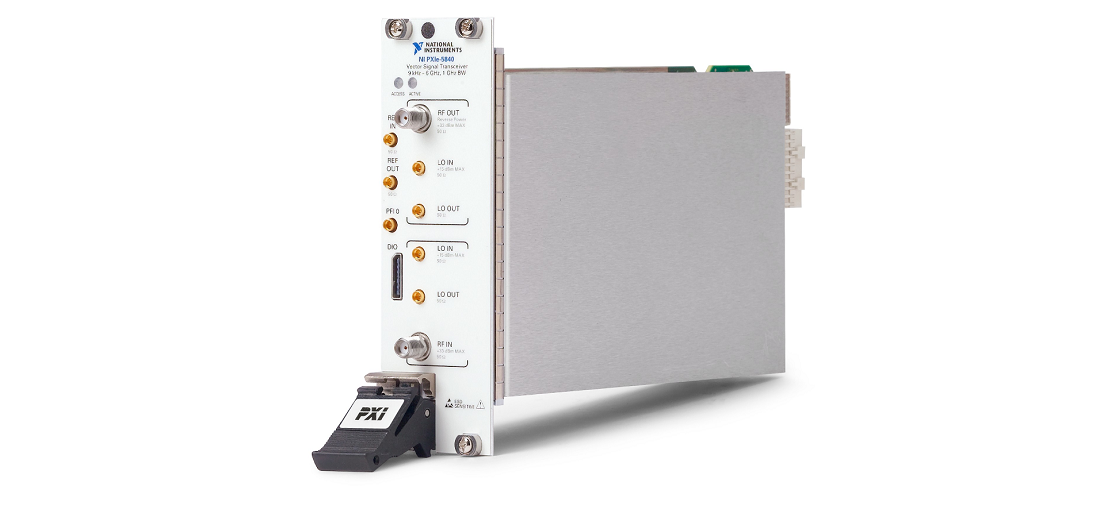NI VST vector transceivers are complete instrumentation based on a software-defined radio (SDR) architecture. They combine the advantages of modular measuring instruments and SDR systems.
The compact module implements a vector RF signal analyzer, a vector RF signal generator, digital and analog I / O lines under the control of a common powerful FPGA.
- Vector analyzer and vector generator.
- High-end 1 GHz RF vector signal generator for signal shaping of any complexity. Premium 200 MHz RF vector signal analyzer for spectrum, modulation and protocol analysis
- Frequency range from 9 kHz to 6.5 GHz
- Instant 1 GHz bandwidth
- Noise level -165 dBm / Hz
- Phase noise -129 dBc / Hz
- 8 digital lines (parallel) up to 50 MHz to control the test object, triggers, etc.
- 8 high-speed 12 Gb / s serial lines
- FPGA VIRTEX-7 XC7VVX690T Control of the entire operation of the device from the hardware level. Digital signal processing, timing, decision making, restructuring of test parameters - with the speed and determinism of the FPGA
- Channel Synchronization Support for NI T-Clock technology and use of a common local oscillator to create phase-coherent multichannel systems
- Calibration Complete calibration of instruments. Introduced into the state register of SI
- PXI Express Reliable form factor for high-performance automation and test systems, high-speed PCI Express bus
- Flexibility of software-defined systems Instrument control, programming in LabVIEW, adding custom functions, using special firmware Instrument Driver FPGA Extension, or completely redefining the instrument using LabVIEW FPGA
NI VST vector transceivers have opened a new class of instruments - software-defined radio measuring instruments. The use of flexible software for working with modular devices is now available not only on the computer, but also at the hardware level - on the FPGA, which controls the operation of the entire device.
Such a structure opens up new possibilities of devices from multiple acceleration of automatic testing to the creation of intelligent hardware and software simulators of real-time radio systems.


